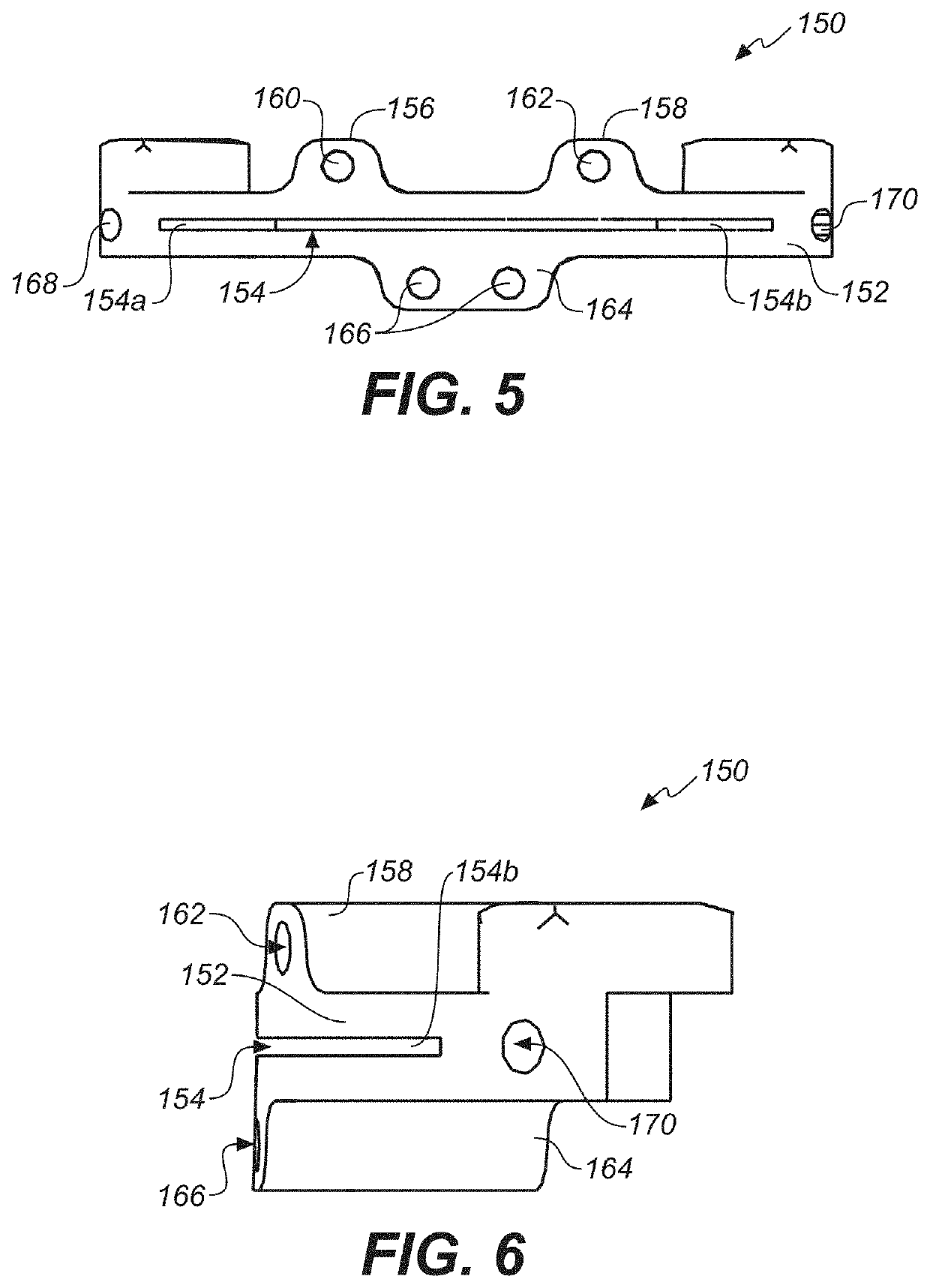Bone cutting guide system for osteochondral transplantation
a bone cutting and osteochondral technology, applied in bone drill guides, medical science, surgery, etc., can solve the problems of less visualization of the entire surface of the acetabulum, achieve the effect of facilitating the precise preparation of both donors, restoring the articular surface, and smoothing the function of the join
- Summary
- Abstract
- Description
- Claims
- Application Information
AI Technical Summary
Benefits of technology
Problems solved by technology
Method used
Image
Examples
embodiment 100
[0077]As seen first in FIGS. 1-13, in an embodiment 100 the bone cutting guide system of the present invention, the modular acetabular cutting tool, can be adapted for use in acetabular transplantation procedures. When so adapted, the device includes a hemispherical reference guide provided in multiple sizes between 40 and 60 mm in 1 mm increments. In the most general terms, the main cutting tool includes a hemispherical body with two vertical cutting slots or channels radially oriented in relation to the perimeter of a lower rim of the hemispherical guide (thus, substantially perpendicular to the widest perimeter of the hemispherical guide). These two cutting channels can be angled between 30 and 150 degrees from one another, with an ideal angle of 90 degrees. The channels extend to and through two outriggers, which each include a vertically oriented body with a vertically oriented cutting slot aligned with one of the cutting channels or slots in the hemispherical body. At the top ...
embodiment 200
[0085]In another embodiment 200, the monoblock acetabular cutting guide shown in FIGS. 14-19—this embodiment again adapted for use in acetabular transplant procedures—the device includes a unitary (one-piece) cutting tool with both an axial cutting slot and vertical cutting slots so as to provide cutting guides of the kind described in connection with the embodiment of FIGS. 2-13, and thus a device that facilitates the removal of osteochondral grafts from the acetabulum.
[0086]This embodiment 200 of the inventive cutting tool includes a concave surface which approximately matches the edge of the acetabulum and a convex hemispherical central extension that matches the contour of the acetabulum. By resting the vertical portion of this concave complementary surface against the rim of the acetabulum, the guide is set in its position in the horizontal plane. By placing the horizontal portion of this concave surface and its central extension against the rim and the surface of the acetabulu...
PUM
 Login to View More
Login to View More Abstract
Description
Claims
Application Information
 Login to View More
Login to View More - R&D
- Intellectual Property
- Life Sciences
- Materials
- Tech Scout
- Unparalleled Data Quality
- Higher Quality Content
- 60% Fewer Hallucinations
Browse by: Latest US Patents, China's latest patents, Technical Efficacy Thesaurus, Application Domain, Technology Topic, Popular Technical Reports.
© 2025 PatSnap. All rights reserved.Legal|Privacy policy|Modern Slavery Act Transparency Statement|Sitemap|About US| Contact US: help@patsnap.com



